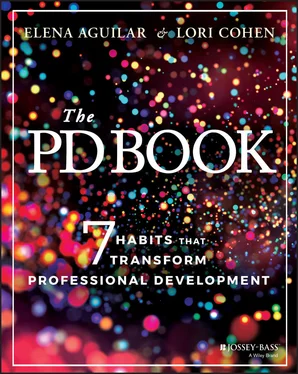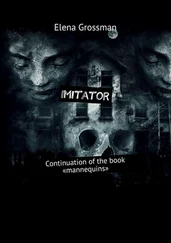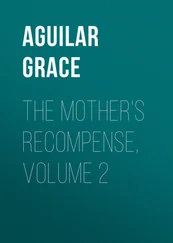Elena Aguilar - The PD Book
Здесь есть возможность читать онлайн «Elena Aguilar - The PD Book» — ознакомительный отрывок электронной книги совершенно бесплатно, а после прочтения отрывка купить полную версию. В некоторых случаях можно слушать аудио, скачать через торрент в формате fb2 и присутствует краткое содержание. Жанр: unrecognised, на английском языке. Описание произведения, (предисловие) а так же отзывы посетителей доступны на портале библиотеки ЛибКат.
- Название:The PD Book
- Автор:
- Жанр:
- Год:неизвестен
- ISBN:нет данных
- Рейтинг книги:5 / 5. Голосов: 1
-
Избранное:Добавить в избранное
- Отзывы:
-
Ваша оценка:
- 100
- 1
- 2
- 3
- 4
- 5
The PD Book: краткое содержание, описание и аннотация
Предлагаем к чтению аннотацию, описание, краткое содержание или предисловие (зависит от того, что написал сам автор книги «The PD Book»). Если вы не нашли необходимую информацию о книге — напишите в комментариях, мы постараемся отыскать её.
The PD Book,
The PD Book
The PD Book — читать онлайн ознакомительный отрывок
Ниже представлен текст книги, разбитый по страницам. Система сохранения места последней прочитанной страницы, позволяет с удобством читать онлайн бесплатно книгу «The PD Book», без необходимости каждый раз заново искать на чём Вы остановились. Поставьте закладку, и сможете в любой момент перейти на страницу, на которой закончили чтение.
Интервал:
Закладка:
The Goal of PD
Professional development is defined by its impact. PD is successful if, after the learning experience, the learner can do something else, or do something different. PD isn't PD if the learner doesn't change, if the learner doesn't learn . Sometimes this learning is evident in the PD session itself, and sometimes the learning isn't evident until a later date, but it's the learning that defines PD.
Transformative impact is the result of a shift in behaviors and beliefs. Every action we take emerges from a belief. New behaviors—new changes in practice—come from new beliefs. New behaviors can generate new beliefs, and new beliefs can generate new behaviors. We'll explore this more in the next section.
Transformative Professional Development
This book's premise is that all PD can and must be transformative. To understand what transformative PD is, let's start with its opposite: transactional PD. PD that is transactional is characterized by the following:
Learners are seen as passive subjects who need to be filled with knowledge that they are lacking.
An expert on the stage transmits knowledge to learners.
The emphasis of the learning is on acquiring new knowledge.
The unspoken goal of the training is to ensure compliant behavior from the subjects.
Rewards are often offered for acquiring knowledge and performing desired behavior; veiled threats may be suggested for not doing so.
If you've ever attended a sit‐and‐get training, you've experienced transactional PD. If you've felt like PD sessions were packed and you didn't have a moment to think and you were a little nervous about whether you were doing the right thing and whether the presenter would call you out and embarrass you, you may have been in a transactional PD session. If you've attended a PD session where you knew there were right and wrong answers, you were likely in a transactional PD session.
So, what makes PD transformative? To answer that, we need to begin with defining transformation . On an individual level, transformation occurs in the domains of “the Three Bs”—in a person's behaviors, beliefs, and ways of being (Aguilar, 2013). Transformation is not just about doing something different, but also about unpacking the mindsets connected to the actions.
Let's understand this by comparing two PD sessions on diverse representation in curriculum. In what we'll call Session A, teachers are presented with a slideshow and lecture explaining the research on “mirrors and windows” (Sims Bishop, 1990). (A mirror is a story that reflects your own culture and helps you build your identity; a window offers you a view into someone else's experience.) Subsequently, they are presented with a list of books that they must teach to diversify their curriculum.
In contrast, in what we'll call Session B on the same topic, teachers are guided through a reflection on their own identity experiences, they explore their beliefs about the need for students to read books that are mirrors and windows, and they have opportunities to discuss the emotions that arise when teaching books with characters whose identities they don't share. They might also review some of the research and listen to portions of books that could be adopted into the curriculum.
Which of these sessions could be transformative? In Session A, there's no learning going on. In Session B, there's the potential for learning.
Here's another example. At some point in their careers, many teachers attend PD on classroom management. When the PD consists of being told to do this and that, or don't do this or that, very little learning is happening. A transformative PD session on classroom management likely includes the following:
An exploration of how to develop relationships with students and of the beliefs that teachers have about power, control, and respect
Opportunities for teachers to practice using new strategies and to get feedback
Time for teachers to recognize and acknowledge the stew of emotions that they experience in the profession
A deconstruction of the beliefs the lie beneath traditional approaches to classroom management, and an opportunity to redefine management
A chance for learners to make the connection between management strategies and their vision for themselves as teachers and people
Transformative PD—PD that changes behaviors, beliefs, and ways of being—is holistic and comprehensive. Too many PD providers focus exclusively on behavior change, and while ultimately facilitators of transformational PD aspire to see changes in practitioners' behaviors, we know that we must also address, explore, and change beliefs and ways of being. Behaviors will change permanently, and the outcome will be transformative only when we also reckon with our beliefs and ways of being.
In writing this book, we grappled with a choice: to label our approach to professional development transformative professional development or to write about professional development without the adjective transformative . Because we define PD as something that changes participants, we believe that the term PD should always refer to learning experiences that are transformative. And so, when we talk about PD, we mean transformative PD. That said, in this book, we'll often include the adjective transformative to remind you of our vision for PD.
In Table 0.1, you'll read a synopsis of our definition of professional development.
Table 0.1 What PD Is and Isn't
| Professional development is… | Professional development isn't… |
|---|---|
| A transformative process in which learners are actively engaged and for which the aim is to explore and expand behaviors, beliefs, and ways of being; a learning process that results in a change of practice . | A transactional process in which learners are passive subjects who are asked simply to change their behaviors . |
| A structure for learning. The purpose of PD is to help people change their practice through exploring their beliefs and ways of being.Required for everyone because we all need to learn and grow.A dynamic, holistic experience. Humans learn with and through our minds, hearts, and bodies.A process to cultivate self‐awareness and understanding, social awareness and understanding, community development, and individual and collective empowerment.A vehicle for social transformation. | A thinly veiled form of control. The goal of PD is not compliance.An opportunity for massive amounts of information to be forced on someone.A punishment for not performing well in a position.An isolated experience, a one‐time event.A vehicle to maintain the status quo. |
Creating the Conditions for Learning
When Elena pulled back the curtain for participants at the end of her three‐day workshop, she revealed that much of the magic was in creating effective and inspiring “conditions for learning.” In effect, this whole book is about creating the conditions for learning—for transformative learning. But what are “the conditions” in which learning happens?
Learning happens when:
Learners understand the purpose for the learning they're involved in, and the purpose is clear, relevant, and meaningful. It's easy to see the benefits that will come from the learning.
The social, emotional, cognitive, and physical needs of learners are met. This includes feeling that you can share your thoughts, that the teacher or facilitator has your best interests at heart, that you are being appropriately challenged, and that other learners will support and encourage you as you learn.
The design for the learning experience is carefully, thoughtfully constructed and based on learner needs.
Читать дальшеИнтервал:
Закладка:
Похожие книги на «The PD Book»
Представляем Вашему вниманию похожие книги на «The PD Book» списком для выбора. Мы отобрали схожую по названию и смыслу литературу в надежде предоставить читателям больше вариантов отыскать новые, интересные, ещё непрочитанные произведения.
Обсуждение, отзывы о книге «The PD Book» и просто собственные мнения читателей. Оставьте ваши комментарии, напишите, что Вы думаете о произведении, его смысле или главных героях. Укажите что конкретно понравилось, а что нет, и почему Вы так считаете.












